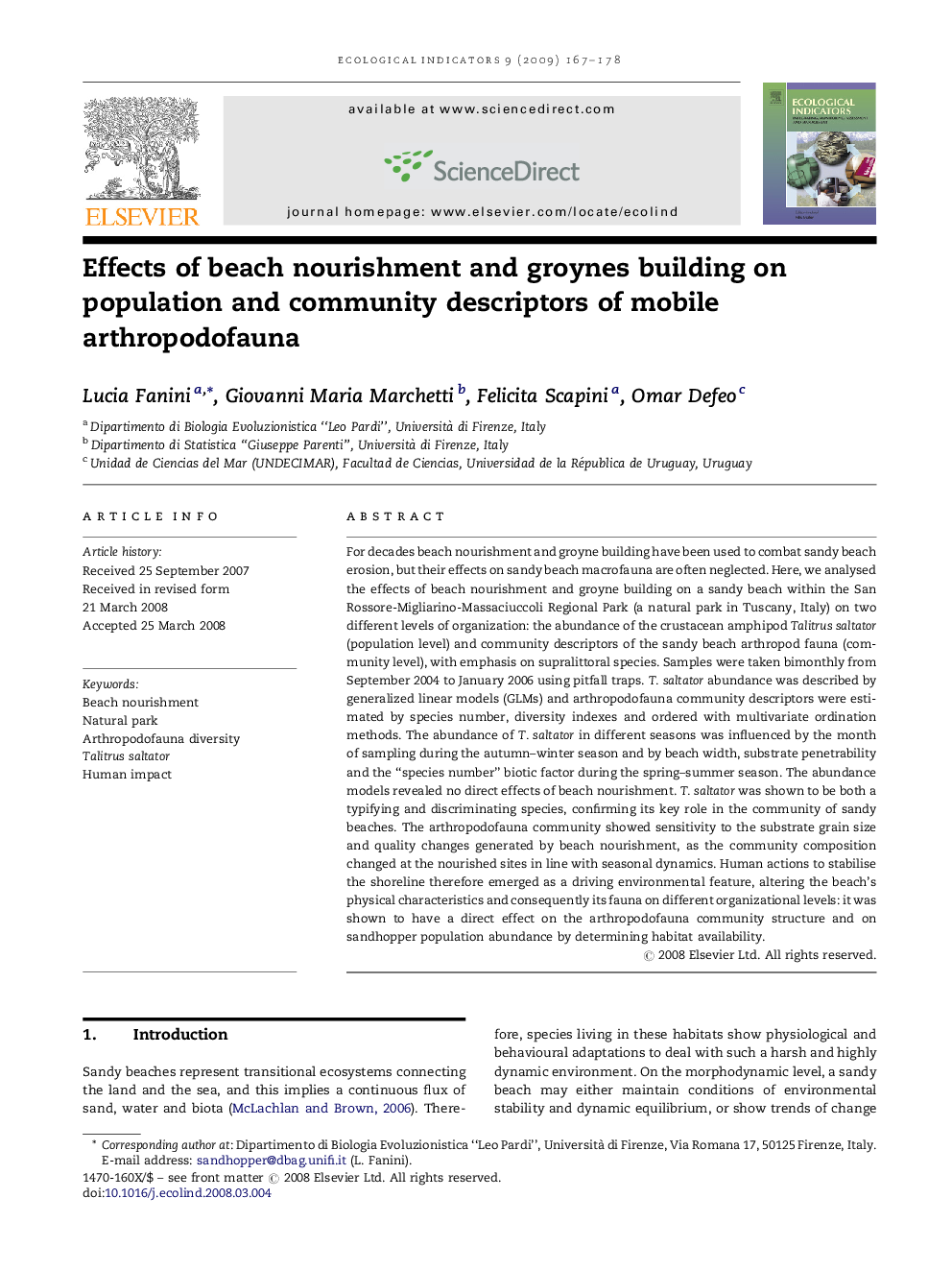| کد مقاله | کد نشریه | سال انتشار | مقاله انگلیسی | نسخه تمام متن |
|---|---|---|---|---|
| 4374565 | 1303179 | 2009 | 12 صفحه PDF | دانلود رایگان |

For decades beach nourishment and groyne building have been used to combat sandy beach erosion, but their effects on sandy beach macrofauna are often neglected. Here, we analysed the effects of beach nourishment and groyne building on a sandy beach within the San Rossore-Migliarino-Massaciuccoli Regional Park (a natural park in Tuscany, Italy) on two different levels of organization: the abundance of the crustacean amphipod Talitrus saltator (population level) and community descriptors of the sandy beach arthropod fauna (community level), with emphasis on supralittoral species. Samples were taken bimonthly from September 2004 to January 2006 using pitfall traps. T. saltator abundance was described by generalized linear models (GLMs) and arthropodofauna community descriptors were estimated by species number, diversity indexes and ordered with multivariate ordination methods. The abundance of T. saltator in different seasons was influenced by the month of sampling during the autumn–winter season and by beach width, substrate penetrability and the “species number” biotic factor during the spring–summer season. The abundance models revealed no direct effects of beach nourishment. T. saltator was shown to be both a typifying and discriminating species, confirming its key role in the community of sandy beaches. The arthropodofauna community showed sensitivity to the substrate grain size and quality changes generated by beach nourishment, as the community composition changed at the nourished sites in line with seasonal dynamics. Human actions to stabilise the shoreline therefore emerged as a driving environmental feature, altering the beach's physical characteristics and consequently its fauna on different organizational levels: it was shown to have a direct effect on the arthropodofauna community structure and on sandhopper population abundance by determining habitat availability.
Journal: Ecological Indicators - Volume 9, Issue 1, January 2009, Pages 167–178